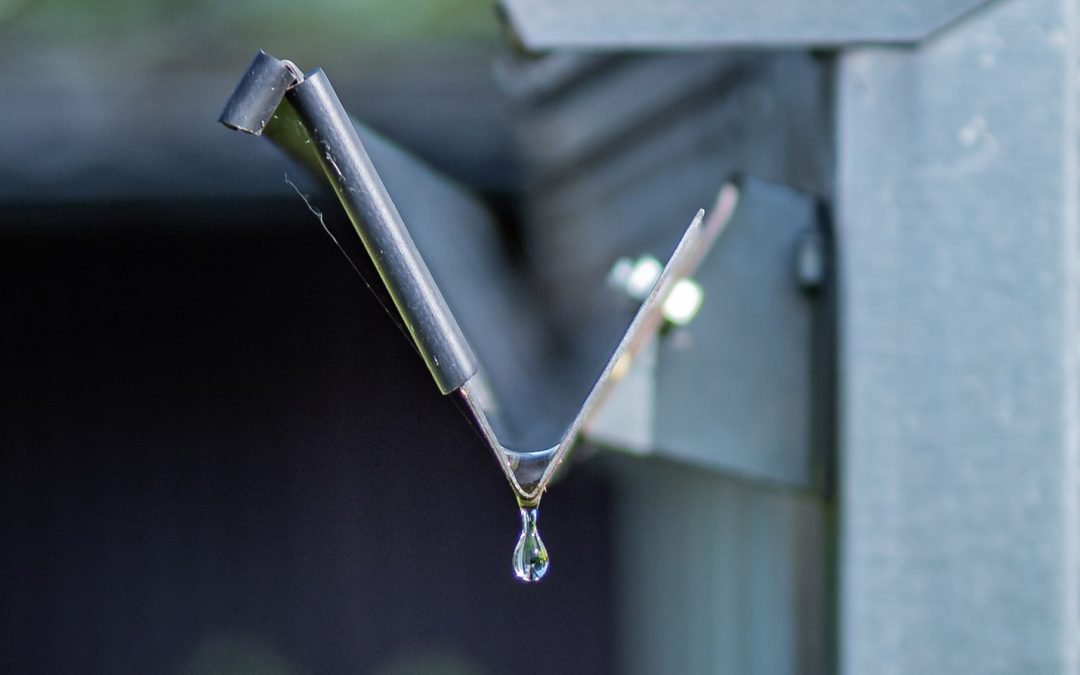Gutters protect your home from water damage, as they help channel rainwater away from the foundation, walls, and roof. Many factors can lead to a bad gutter installation, so we’re here to help you recognize common gutter installation mistakes to ensure they don’t happen in your home.
Wrong Gutter Placement
One of the biggest rain gutter installation mistakes is incorrect placement, which can happen during a DIY project or by working with an inexperienced team. So, where should gutters be placed? Here are a few tips.
- Gutters should be aligned along the roof’s edge with a slight slope toward downspouts.
- Account for the natural flow of rainwater and place gutters accordingly to capture the maximum amount.
- To avoid a bad gutter installation, consider working with roofing professionals like M&M Gutters & Exteriors.
Wrong Gutter Size
If gutters are too small, they won’t be able to accommodate heavy rainfall and will quickly overflow, which could lead to water damage on your roof. Gutters that are too big look unsightly, will cost more, and could be more prone to clogs. Our team can help you find the correct gutter size for your home.
Choosing the Wrong Type of Gutter
Another thing that leads to incorrect gutter installation is choosing the wrong type of gutter for your home. To determine the right gutter for your house, consider the following.
- Average rainfall — If you live in an area with a lot of rain, you’ll want gutters with enough capacity to handle it.
- Roof size and pitch — A large roof with a steep pitch will need bigger gutters. Steeper roofs create faster runoff from rainfall, while smaller gutters may overflow with too much water running through them.
- Overflow areas — If your current gutters constantly overflow, you’ll want to ensure your new gutters can accommodate those areas.
- Material — Make sure you choose a durable material for your gutters, such as copper, aluminum, or vinyl.
- Design — Gutters also come in different designs, like K-style, half-round, or box, so you want to choose ones that look good with your home and meet your needs.
Selecting the Cheaper Option
The cheaper option is often risky, as you could end up with bad gutters from a team that makes gutter installation mistakes, leading to more costly repairs and replacements. Invest in high-quality materials and work with an experienced company like M&M Gutters & Exteriors to avoid a bad gutter installation.
Miscalculating the Pitch
Many people wonder if gutters should be level to the roofline, and the answer is no. Gutters should be pitched toward the downspout to encourage water to flow in that direction. Gutter placement should slope down half an inch for every 10 feet of gutter until it reaches the downspout. For roofs longer than 40 feet, it’s wise to have a downspout on each end with a high point in the middle before sloping toward either side.
Improper Hanger Spacing
Gutter hangers support the gutter and attach it to the roof’s fascia. Hangers spaced too far apart during an incorrect gutter installation can lead to sagging, disrupting the water flow, and leading to leaks and overflowing. You want to ensure your gutters are correctly spaced according to your roof size and the manufacturer’s recommendations based on gutter material and size.
Too Many Seams
When the pieces of your gutter join together, it creates a seam, leading to a potential weak spot over time. To avoid this issue, you should opt for seamless options or work with a professional to get optimal gutter placement with fewer seams.
Damaging the Gutters During Installation
Another common gutter installation mistake is damaging the gutters while putting them up. Dents, scratches, or other structural damages can weaken areas more prone to leaking. To avoid this bad gutter installation issue, consider working with a professional to ensure your gutters are installed correctly and with no damage.
Installing the Downspouts in the Wrong Location
Downspouts are responsible for moving the water in your gutters away from your home. If installed in the wrong place, the gutters can get clogged and overflow into your home, causing extensive damage. You’ll need at least one downspout for every 40 feet of gutter, and the end of it should be angled away from your home to help keep water out.
Opting Against Installing Gutter Guards
Another way to avoid an incorrect gutter installation is to add a gutter guard — or leaf guard — over your gutters. These devices help keep leaves and other large debris out of your gutters, which helps prevent clogs or overflows that lead to more significant problems.
The Bottom Line on Installing Rain Gutters
Correct gutter placement on a house is essential to minimize the risk of roof leaks and extensive water damage. You can avoid gutter installation mistakes by contacting the knowledgeable team at M&M Gutters & Exteriors. We have over 30 years of industry experience and ensure we do an exceptional job on every project.
Our Related Blogs
Interested in learning more about how to care for your roof? Check out these helpful blogs!



